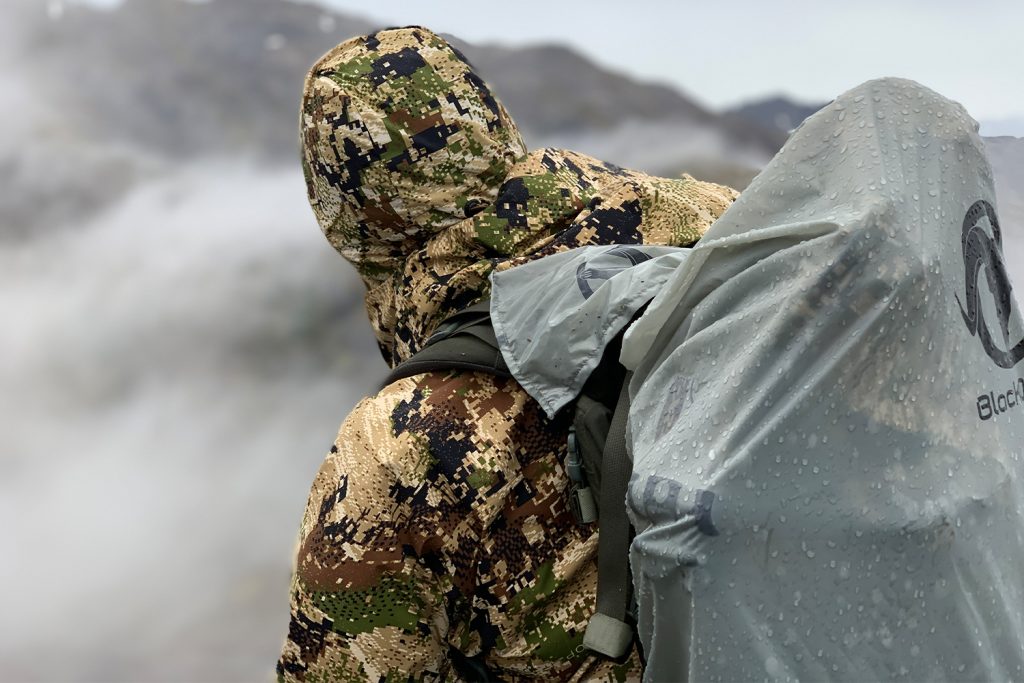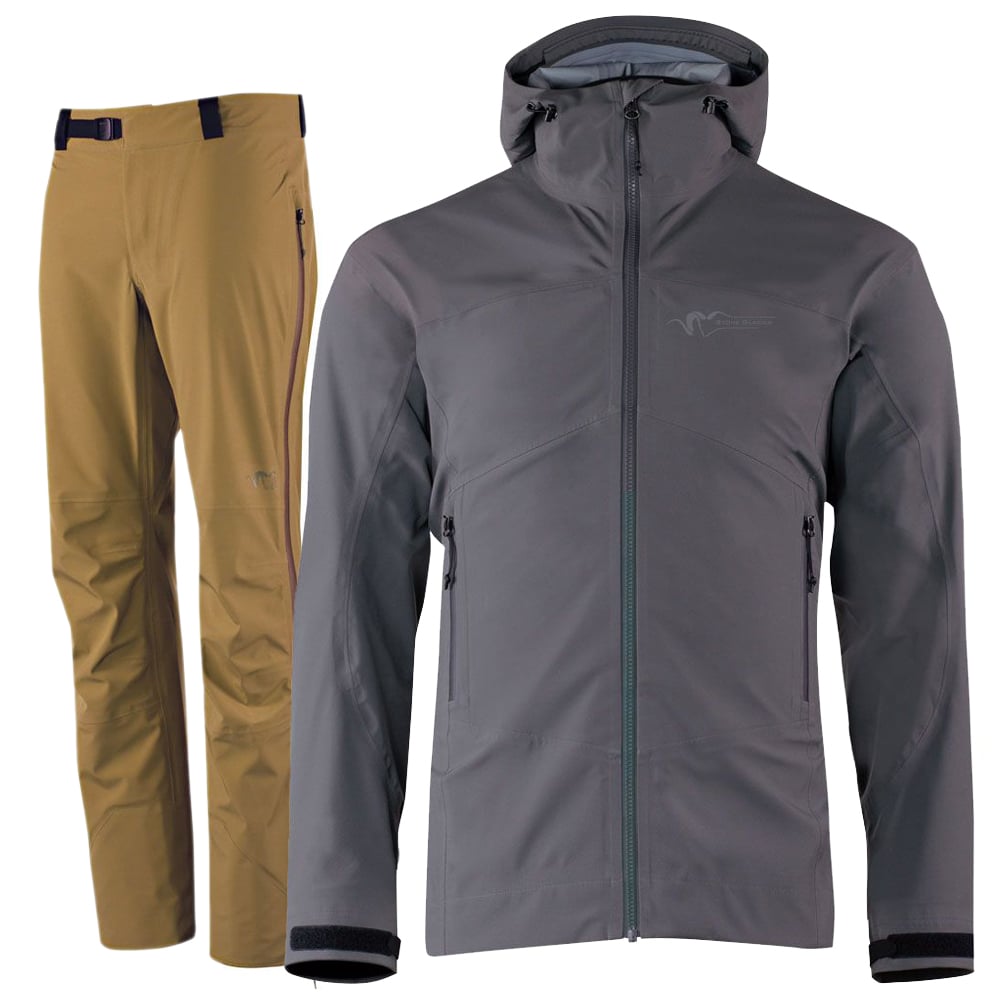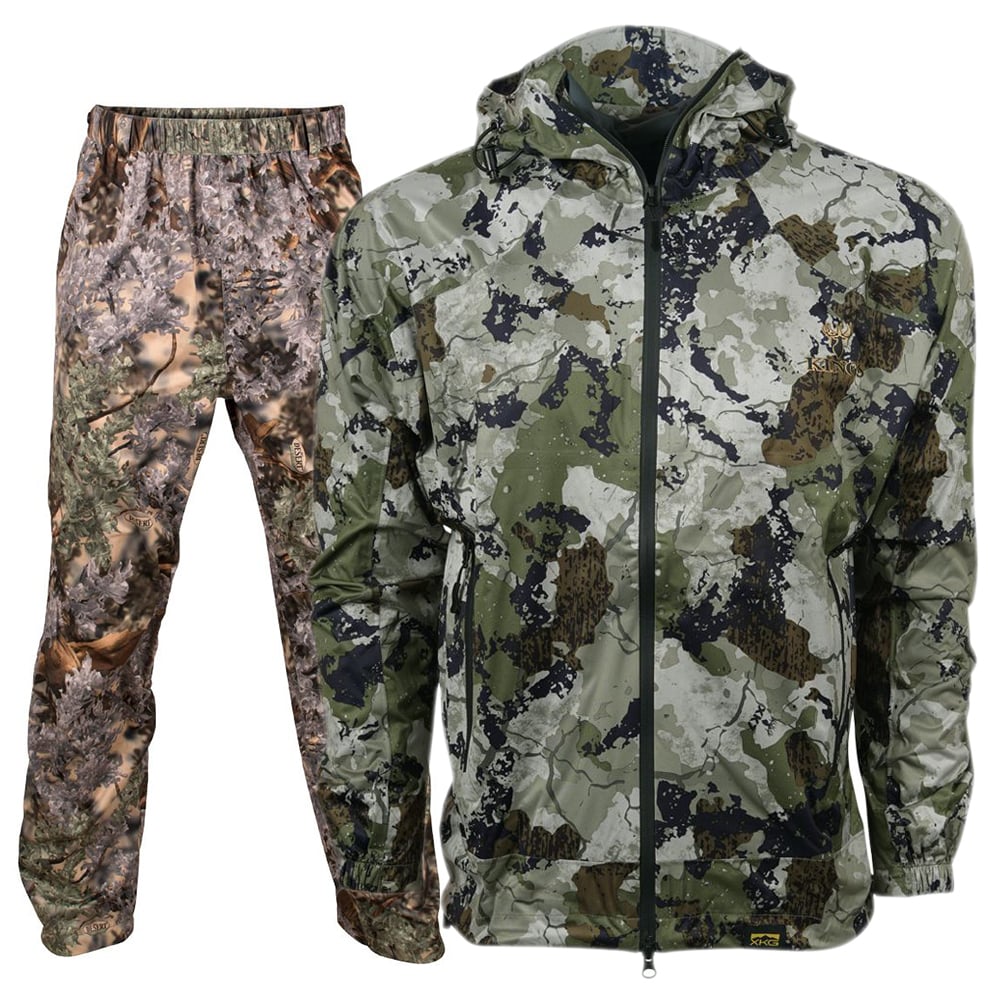Rainwear Guide

Rain gear is a purpose-built layer that is great for rain, wind, and snow. It will be the most water-resistant piece in your layering system. High-quality rain gear will be waterproof and breathable. In comparison to other fabrics rain gear is made out of a tougher material that is water-resistant, but also noisier. The type of rain gear that I bring depends on the season and type of hunt.
WATER RESISTANT VS. WATERPROOF
It is important to realize that most rain gear is water-resistant and not waterproof. While rain gear now is almost waterproof, it is built to be breathable and allows you to wear it while hiking. Although rain gear is built tough it can break down over time and the coating will start to let some moisture through.
Throughout the season I will switch between two sets of rain gear. The first set is a lightweight breathable jacket and the second is the highest rated rain jacket. I carry the lightweight rain gear during the summer scouting, early season archery, and into mid-October elk hunting. In the picture above I am using my lightweight rain gear to protect me from mosquitos. It is enough to keep me dry during scattered rain showers and to protect me from the wind and bugs.
The second set is my heavy-weight rain gear, Sitka Cloudburst, that I use in cold October hunts and into November late-season hunts. It keeps me dry in not only rainstorms but also snowstorms and is a great outer layer to keep warm when temps drop.
RAIN GEAR TECHNOLOGY
Brands like Sitka use Gore-Tex. Gore-Tex is a waterproof, breathable fabric membrane. Gore-Tex can repel liquid water while allowing water vapor to pass through and is designed to be a lightweight, waterproof fabric for all-weather use.
When choosing rain gear consider the type of fabric, coating, and taped seams.
Other brands use DWR coatings. Durable Water Repellency coating (DWR) is a treatment on the fabric to make it water-resistant. The biggest advantage of water-resistant jackets is the price, they tend to be more affordable than fully waterproof styles. However, they will usually be less durable and may need reproofing more regularly than other waterproof jackets.
SEAMS & ZIPPERS
A jacket can be treated with a waterproof coating and have a waterproof membrane but not be fully waterproof as mentioned earlier. For a jacket to be 100% waterproof it will also need to have taped seams. Taped seams are heat-sealed seams that stop water from coming through the stitching. It is particularly important to choose a jacket with taped seams if you will be in heavy, prolonged rain. Zippers are also a failure point in rain gear. Sitka uses high-quality zippers to ensure a completely waterproof jacket.
BREATHABILITY
The ability of a jacket to allow moisture to escape is as important as not letting water in, especially for hunting. If a waterproof jacket is not breathable, sweat will be unable to escape, making the wearer feel damp. It’s common for people to feel as though their waterproof has ‘leaked’ when in fact it’s perspiration from inside they are feeling. In addition to a breathable membrane, other features such as pit zips and mesh-lined pockets can contribute to a jacket’s breathability.
DURABILITY
Not all rain gear is created equal. Construction varies drastically between brands. Rain gear can be a single-layer all the way up to 3.5 layer construction. Single layers are light but fragile and multi-layer is heavy but more durable. The tradeoff is that weight also increases. A two-layer shell might only weigh 11 oz to 16 oz. while a three-layer shell can weigh 25 oz. or more.
The Sitka Flash Pullover that I have with me for early season hunts is lightweight at 7.8 oz, breathable but very fragile. In comparison, the Sitka Cloudburst jacket that I have for heavy rain and weather is heavy at 17.6 oz but very durable and waterproof.
Durability also depends on how fast the jacket’s fabric breakdowns over time and use. When the outer face of a rain shell is scratched, the outer coating can break down, leading to the fabric being less effective. While it might not leak water in short durations of use over time it will leak.
CONCLUSION
Overall, when it comes to rain gear buy the best that you can afford. This will allow you to stay dry, continue hunting and not be miserable. Although there are cheaper options don’t buy a jacket that will leave you wet, sweaty, and disappointed. A well-thought-out layering system is worth its weight because it will minimize excess clothing and give proper warmth and protection.
In my last Cold Weather Layering article I talked about how if you want to stay warm when the temperature drops, stay dry when the waterfalls, and stay cool when the temperatures rise, you need to invest in a good layering system. In choosing the right rain gear you will need to consider the environments you hunt in and the time you will be wearing your rain gear. Will it be part of a layering system? Will you be wearing it all day your just during the weather? When will you be hunting? All of these factors must be considered when deciding on the rain gear you will be wearing.




